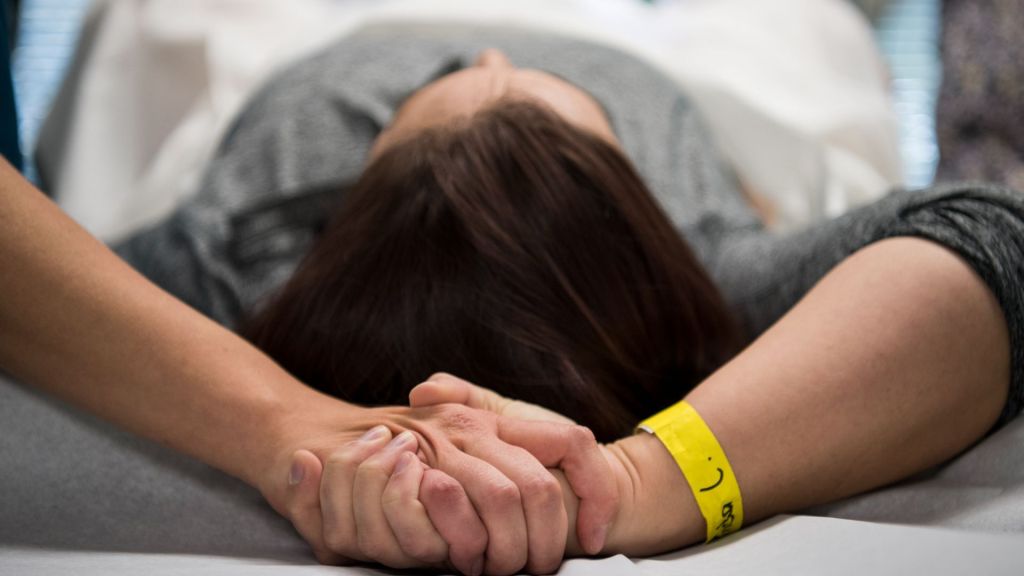
Commentary
-
Our commentary partners will help you reach your own conclusions on complex topics.
When we visit an amusement park, we anticipate the excitement that will come from a death-defying drop out of the air, or an upside-down loop on a roller coaster, never thinking about the fact that we’re far more likely to be hurt or even killed on the way to the park than we are once we’re inside its walls.
We all know that riding in a car is dangerous. But we do it anyway. We use seatbelts to lessen the likelihood of negative consequences resulting from our decision to participate in a risky behavior.
In the 1960s, the US government, acknowledging the inherent risks of travel by car, began requiring that cars include seatbelts. And today, deaths per miles traveled are about one-fifth of what they were in 1965.
Just imagine, for a moment, if we approached the opioid crisis with the same levelheaded sensibility – the same eye towards what we call “harm reduction.”
And yet as the body count for the opioid crisis rises year after year, the US government has failed to implement any comprehensive response, even demonstrating open hostility to strategies for harm reduction that have proven strikingly effective.
Trump, for example, views the issue as a supply-and-demand problem: If you make it harder to get drugs, and give the death penalty to dealers, it’ll go away. Except this prohibition-style approach doesn’t work. People want drugs, they will get drugs.
What does work? Decriminalizing lesser drug offenses, and replacing arrests with addiction treatment and social services. Portugal, once known as the heroin capital of the world, did this in 2001. Overdose deaths in that country subsequently fell by 85%.
In Seattle, which has stopped jailing people found with small amounts of drugs, users are more likely to have a job and a home, and less likely to be rearrested.
Academic research has disproven the claim that harm reduction tactics – including access to Safe Consumption Spaces, needle exchange programs, and free drug testing strips and Naloxone (also known by its brand name, Narcan) – will result in increased drug use, but have definitively shown that they are effective at combating overdose deaths.
As an example, 2018 study of national harm reduction policies found that opioid deaths dropped by 14% in states that made Naloxone (also known by its brand name, Narcan) easier to acquire.
Americans tend to see drug use through the prism of criminality rather than public health. Embracing harm reduction efforts requires seeing drug use as a part of life. But like driving, drug use is an activity that incurs risk, and yet is something that happens every day.
People who suffer from addiction…they’re still people. And the way to help them is through support, compassion, and outreach – not through punitive measures that only make them less likely to ask for the help that they need.
Short story: If someone isn’t breathing, they’re not capable of seeking – or participating in – their recovery. And that is a choice that should be left to them.
-
RFK Jr.’s war on psychiatric meds risks decades of progress
On Feb. 18, during his first meeting with staff, Health and Human Services Secretary Robert F. Kennedy Jr. stated that he intends to address the possible overmedication of children and the risks of antidepressants — echoing a Trump executive order aimed at reducing childhood chronic disease rates. The order has sparked concerns over youth access… -
Loss of USAID makes America and the world less safe
Elon Musk and President Trump shocked the U.S. foreign policy community and America’s partners around the world with the early and abrupt closure of USAID, the United States Agency for International Development. USAID was a cornerstone of U.S. foreign policy and consistently received bipartisan support from Congress. Experts warned that the decision puts millions of… -
Trump’s ‘Gulf of America’ renaming is mere political spectacle
Aboard Air Force One, en route to the Super Bowl in New Orleans, President Trump held a news conference. As the flight entered international waters over the Gulf of Mexico, he issued an executive order renaming it the “Gulf of America” and declaring Feb. 9 as “Gulf of America Day.” The order, titled Restoring Names… -
President Trump politicizes DC plane crash as Americans mourn
Sixty-seven people died when a Black Hawk helicopter crashed into American Airlines Flight 5342 as it came in for a landing at Reagan National Airport on the night of Jan. 29 outside of Washington, D.C. Investigators are still examining the accident and putting details together, but believe that the helicopter was flying at too high… -
Project 2025 is Trumpism on steroids
President Trump has already taken several actions that align with Project 2025, a far-right blueprint for Trump’s second term developed by the Heritage Foundation. Among other intiatives, his administration has moved to eliminate DEI programs, reinstate service members dismissed for refusing the COVID-19 vaccine, and revive “Schedule F,” a policy making it easier to fire…
Latest Opinions
-
 Getty Images
Getty Images
NFL scouting combine: How much faster can these players run?
-
 Getty Images
Getty Images
James Cameron seeks New Zealand citizenship following ‘horrific’ Trump re-election
-
 Getty Images
Getty Images
San Francisco DA Charges 11 in SNAP fraud scheme involving $4M
-
 Getty Images
Getty Images
California’s minimum wage increase led to job losses, higher prices: Study
-
 Getty Images
Getty Images
Appeals court blocks Arizona’s proof of citizenship law, cites voter suppression
Popular Opinions
-
In addition to the facts, we believe it’s vital to hear perspectives from all sides of the political spectrum.






